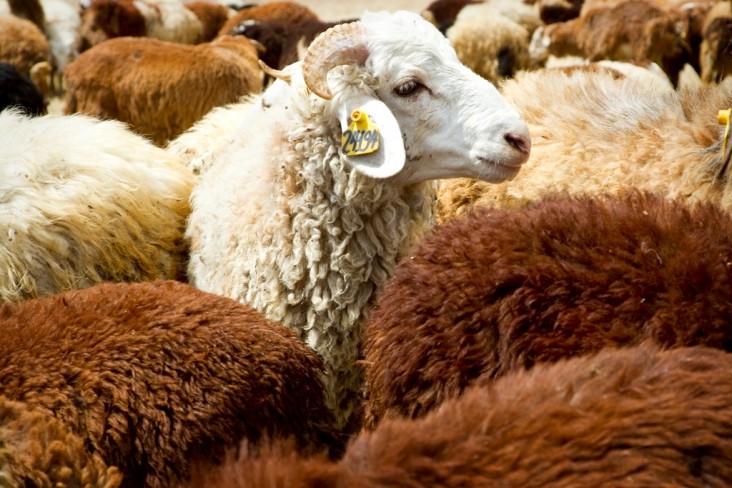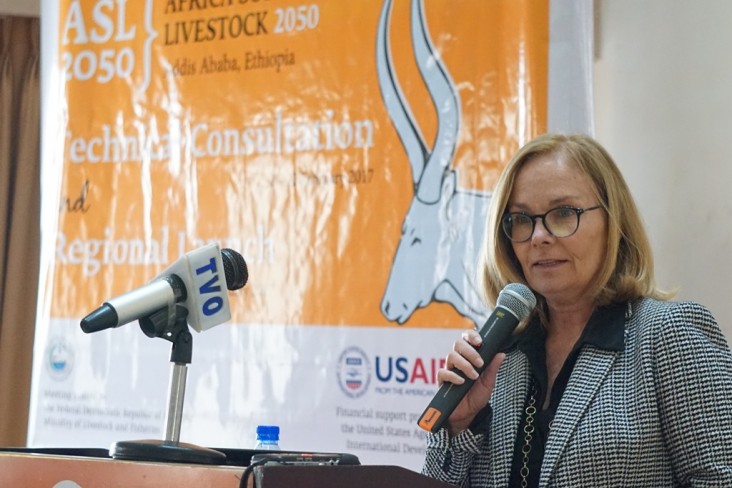
For Immediate Release
Africa Sustainable Livestock 2050 (ASL2050) launched today in Addis Ababa, encouraging governments to think beyond livestock today, for the people of tomorrow. ASL2050 is a cross-sectoral initiative analysing the impact of a growing livestock sector on public health, the environment, and livelihoods.
Government ministers and representatives from Burkina Faso, Egypt, Ethiopia, Kenya, Nigeria and Uganda, the United States Agency for International Development (USAID), and the Food and Agriculture Organization of the United Nations (FAO) met today in Ethiopia to discuss the future of the livestock sector in Africa.
Professor Fekadu Beyene, Ethiopian Minister of Livestock and Fishery, explained “This is a wonderful opportunity to share expertise and experience between ministries and countries, with the aim of building a sustainable livestock sector in the coming decades that will enrich the lives of all our citizens. We are looking forward to partnering with USAID and FAO to examine our livestock systems now, and realise the potential they have for the future through the sustainable implementation of the Livestock Master Plan.”

Africa’s economy is forecast to experience significant growth in the next 20 to 30 years. As a result of rising household incomes, people will want to eat more meat, eggs and dairy products. This provides a great opportunity for growth in the livestock sector, but could also pose serious challenges for public health and environmental protection. ASL2050 aims to facilitate a dialogue between countries, ministries, and specialists to help Africa to prepare for these changes – building the capacity to maximise benefits and minimise challenges.
“The demand for milk, meat and eggs is going to double, triple and even quadruple in some African countries in the coming decades. This is going to cause a revolution in the livestock sector,” said USAID Ethiopia Mission Director Leslie Reed. “With ASL2050, we are going to collaborate with governments to work out how to build the foundations for this change, so that African farmers and consumers will be better off. More livestock means more feed is needed, and land use will change. This presents some challenges for the environment that we need to start preparing for now.”
By facilitating a dialogue between the livestock, environment, livelihoods and public health ministries of Burkina Faso, Egypt, Ethiopia, Kenya, Nigeria and Uganda, ASL2050 will identify actions that can be taken now to ensure a sustainable and productive livestock sector, while protecting the environment and public health.
Berhe Tekola, director of the Animal Production and Health Division of the FAO said, “Asia experienced a period of rapid economic growth from the 1970s to the early 2000s, and the livestock sector grew rapidly as a result. Unfortunately, the safeguards were not in place to manage infectious disease spread and we saw the emergence of highly pathogenic avian influenza in 2003. With similar growth in the livestock sector forecast for Africa, we want to make sure we are prepared so we can prevent a similar disease emergence event in the future, and stay on track to achieve the sustainable development in Africa that we are all hoping for.”
ASL2050 will also anticipate long-term public health risks such as unexpected disease spread from livestock to humans, and identify policies or procedures to implement now that can reduce these risks in the future.
See also
USAID Remarks ASL 2050 [PDF, 128kb]







Comment
Make a general inquiry or suggest an improvement.